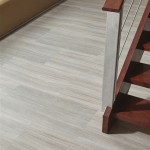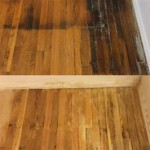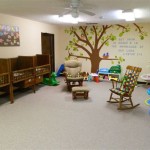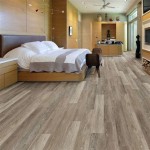What Is The Best Laminate Flooring?
Selecting the "best" laminate flooring is a multifaceted process, reliant heavily on individual needs and priorities. No single laminate product universally reigns supreme. Instead, the optimal choice hinges on factors such as budget, lifestyle, foot traffic, aesthetic preferences, and the specific room in which the flooring will be installed. This analysis will explore the crucial criteria to consider when determining the most suitable laminate flooring option for a given situation.
Laminate flooring, a synthetic product comprised of multiple layers, has garnered significant popularity as an affordable and durable alternative to hardwood and other types of flooring. Its construction typically includes a core layer made of high-density fiberboard (HDF) or medium-density fiberboard (MDF), a decorative layer that mimics the appearance of wood, stone, or tile, and a protective wear layer that resists scratches, dents, and fading. The quality and performance of these layers greatly influence the overall lifespan and suitability of the laminate flooring.
Understanding the Abrasion Class (AC) Rating
The Abrasion Class (AC) rating is a standardized measure that indicates a laminate floor's resistance to wear and tear. It is a critical factor to consider when selecting laminate flooring, especially for areas with varying levels of foot traffic. The AC rating system ranges from AC1 to AC5, with higher numbers signifying greater durability.
An AC1 rating is generally suitable for residential use with light foot traffic, such as bedrooms or guest rooms. An AC2 rating is appropriate for moderate residential use, like living rooms or dining rooms. For areas with high foot traffic, such as hallways, kitchens, or commercial spaces, an AC3, AC4, or AC5 rating is recommended. AC4 and AC5 rated laminates are typically designed for commercial applications and can withstand significant wear and tear, making them suitable for demanding residential environments as well.
Choosing the appropriate AC rating is essential for ensuring the longevity and appearance of the laminate flooring. Opting for a lower AC rating than required for the intended area can lead to premature wear, scratches, and fading, necessitating costly repairs or replacements. Conversely, selecting a higher AC rating than necessary may result in unnecessary expense. Therefore, carefully assessing the anticipated foot traffic and usage patterns of each room is crucial in determining the appropriate AC rating.
Evaluating Thickness and Core Material
The thickness of laminate flooring directly impacts its stability, sound absorption, and resistance to impact. Typically, laminate flooring ranges in thickness from 6mm to 12mm. Thicker planks tend to be more durable and offer better sound insulation compared to thinner planks. They also provide a more solid feel underfoot, mimicking the characteristics of hardwood flooring.
The core material, usually HDF or MDF, constitutes the foundation of the laminate plank. HDF is denser and more resistant to moisture than MDF, making it a preferable choice for areas prone to humidity or spills, such as kitchens and bathrooms. However, MDF is often more cost-effective and can be suitable for other areas of the home with lower moisture exposure.
When selecting laminate flooring, it is important to consider the interplay between thickness and core material. A thicker plank made of HDF will generally provide the best combination of durability, moisture resistance, and sound absorption. However, a thinner plank made of MDF may be a viable option for budget-conscious consumers or for areas with minimal moisture exposure.
Analyzing Water Resistance and Installation Methods
Water resistance is a vital consideration, especially for kitchens, bathrooms, and entryways. While no laminate flooring is entirely waterproof, some products offer enhanced water resistance through various technologies. These technologies may include sealed edges, water-resistant core materials, and specialized coatings.
Water-resistant laminate flooring is designed to withstand spills and splashes for a limited time, preventing water from seeping into the core and causing swelling or warping. However, it is important to note that prolonged exposure to moisture can still damage even the most water-resistant laminate flooring. Therefore, it is crucial to clean up spills promptly and avoid using laminate flooring in areas with standing water or excessive humidity.
Installation methods vary depending on the type of laminate flooring. The most common method is a "click-lock" system, which involves interlocking the planks together without the need for glue or nails. This method is relatively straightforward and can be a DIY-friendly option. Other installation methods include glue-down and nail-down, which are typically used for commercial applications or when installing laminate flooring over uneven subfloors. Choosing the appropriate installation method will depend on the specific product and the existing floor conditions.
Deliberating Style, Texture, and Design
Laminate flooring offers a vast array of styles, textures, and designs, mimicking the appearance of various natural materials such as hardwood, stone, and tile. The decorative layer, also known as the photographic layer, is responsible for creating the visual appeal of the laminate flooring.
When selecting a style, it is important to consider the overall aesthetic of the room and the desired look. Hardwood-look laminate flooring is a popular choice for creating a warm and inviting atmosphere, while stone-look laminate flooring can add a touch of elegance and sophistication. Tile-look laminate flooring is often used in kitchens and bathrooms to replicate the look of ceramic or porcelain tiles.
Texture plays a crucial role in enhancing the realism of laminate flooring. Embossed-in-register (EIR) technology is a popular technique that aligns the texture with the underlying image, creating a highly realistic wood or stone appearance. Other texture options include smooth, hand-scraped, and distressed, each offering a unique visual and tactile experience.
Design considerations include plank width, length, and edge details. Wider planks tend to create a more modern and spacious feel, while narrower planks can evoke a more traditional look. Longer planks minimize the number of seams, resulting in a cleaner and more seamless appearance. Edge details, such as beveled or square edges, can further enhance the visual appeal of the laminate flooring.
Evaluating Underlayment and Subfloor Preparation
Underlayment is a thin layer of material installed beneath the laminate flooring to provide cushioning, sound insulation, and moisture protection. Selecting the appropriate underlayment is crucial for maximizing the performance and longevity of the laminate flooring.
Different types of underlayment offer varying levels of sound absorption and moisture resistance. Foam underlayment is a common and affordable option that provides basic cushioning and sound insulation. Cork underlayment offers superior sound absorption and is naturally resistant to mold and mildew. Moisture-barrier underlayment is designed to prevent moisture from seeping into the laminate flooring, making it a suitable choice for areas prone to humidity.
Subfloor preparation is another essential step in the installation process. The subfloor must be clean, level, and dry before installing the laminate flooring. Any imperfections in the subfloor, such as cracks or bumps, should be repaired to ensure a smooth and even surface. Uneven subfloors can lead to uneven flooring, which may cause premature wear and tear.
Considering Budget and Long-Term Value
Laminate flooring prices vary significantly depending on the quality, style, and features. While budget is a significant consideration, it is important to weigh the upfront cost against the long-term value. Investing in a higher-quality laminate flooring with a higher AC rating, thicker planks, and enhanced water resistance can ultimately save money in the long run by reducing the need for repairs or replacements.
Furthermore, consider the overall cost of installation, including the cost of underlayment, tools, and labor. DIY installation can save money on labor costs, but it requires careful planning and execution. Professional installation may be a better option for those who lack experience or confidence in their DIY skills.
When evaluating long-term value, consider the lifespan of the laminate flooring and its potential impact on the resale value of the home. Durable and well-maintained laminate flooring can enhance the aesthetic appeal and perceived value of the property.
Examining Warranty and Maintenance Requirements
A comprehensive warranty can provide peace of mind and protect against manufacturing defects. Most laminate flooring manufacturers offer warranties that cover issues such as delamination, fading, and wear-through. The length and terms of the warranty can vary, so it is important to carefully review the warranty details before making a purchase.
Proper maintenance is essential for preserving the appearance and extending the lifespan of laminate flooring. Regularly sweep or vacuum the floor to remove dirt and debris. Clean spills promptly with a damp cloth or mop. Avoid using abrasive cleaners or excessive water, as these can damage the surface of the laminate flooring. Use furniture pads under heavy objects to prevent scratches and dents. Following the manufacturer's recommended maintenance guidelines will help keep the laminate flooring looking its best for years to come.
Ultimately, the "best" laminate flooring depends on a meticulous evaluation of these interconnected factors. By carefully assessing the specific needs, desired aesthetic, and budget constraints, one can make an informed decision and select the laminate flooring option that offers the optimal balance of durability, style, and value.

The Best Laminate Flooring Of 2024

Choosing The Best Laminate Floors For Your Home 2024

The Best Laminate Flooring Of 2024

The Best Laminate Flooring For Your Home 2024 Forbes

The Best Laminate Flooring Of 2024

Best Type Of Laminate Flooring Direct

Siberian Spruce D2967 Kronotex Laminate Best At Flooring

Dartmoor Oak Effect Laminate Flooring 1 48m² Diy At B Q

Embrace Herringbone 10mm Tagus Oak 4627

How To Choose The Best Laminate Flooring For Your Home
Related Posts








